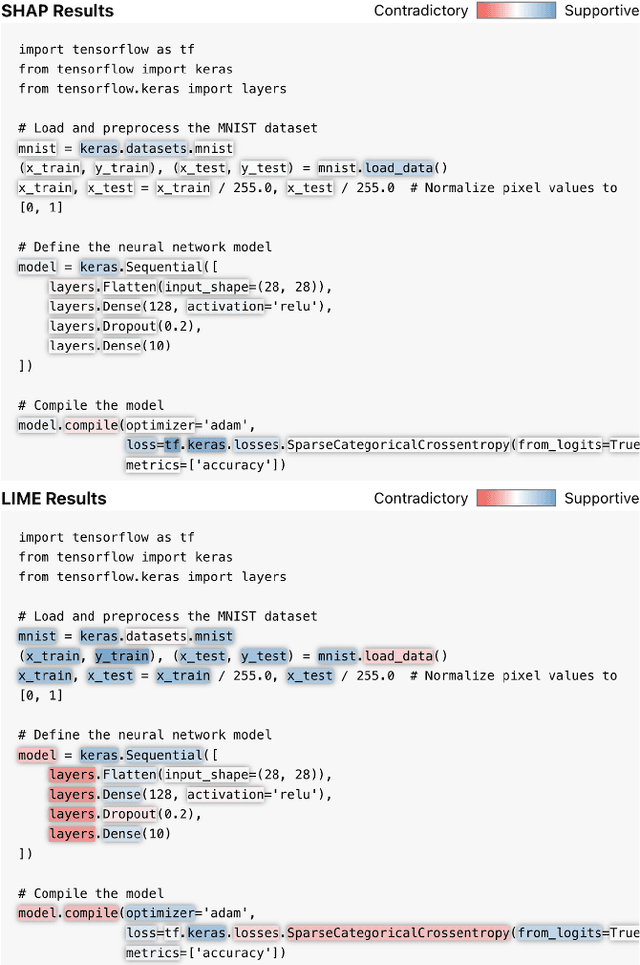Steven R. Gomez
More Questions than Answers? Lessons from Integrating Explainable AI into a Cyber-AI Tool
Aug 08, 2024

Abstract:We share observations and challenges from an ongoing effort to implement Explainable AI (XAI) in a domain-specific workflow for cybersecurity analysts. Specifically, we briefly describe a preliminary case study on the use of XAI for source code classification, where accurate assessment and timeliness are paramount. We find that the outputs of state-of-the-art saliency explanation techniques (e.g., SHAP or LIME) are lost in translation when interpreted by people with little AI expertise, despite these techniques being marketed for non-technical users. Moreover, we find that popular XAI techniques offer fewer insights for real-time human-AI workflows when they are post hoc and too localized in their explanations. Instead, we observe that cyber analysts need higher-level, easy-to-digest explanations that can offer as little disruption as possible to their workflows. We outline unaddressed gaps in practical and effective XAI, then touch on how emerging technologies like Large Language Models (LLMs) could mitigate these existing obstacles.
Beyond Expertise and Roles: A Framework to Characterize the Stakeholders of Interpretable Machine Learning and their Needs
Jan 24, 2021



Abstract:To ensure accountability and mitigate harm, it is critical that diverse stakeholders can interrogate black-box automated systems and find information that is understandable, relevant, and useful to them. In this paper, we eschew prior expertise- and role-based categorizations of interpretability stakeholders in favor of a more granular framework that decouples stakeholders' knowledge from their interpretability needs. We characterize stakeholders by their formal, instrumental, and personal knowledge and how it manifests in the contexts of machine learning, the data domain, and the general milieu. We additionally distill a hierarchical typology of stakeholder needs that distinguishes higher-level domain goals from lower-level interpretability tasks. In assessing the descriptive, evaluative, and generative powers of our framework, we find our more nuanced treatment of stakeholders reveals gaps and opportunities in the interpretability literature, adds precision to the design and comparison of user studies, and facilitates a more reflexive approach to conducting this research.
 Add to Chrome
Add to Chrome Add to Firefox
Add to Firefox Add to Edge
Add to Edge